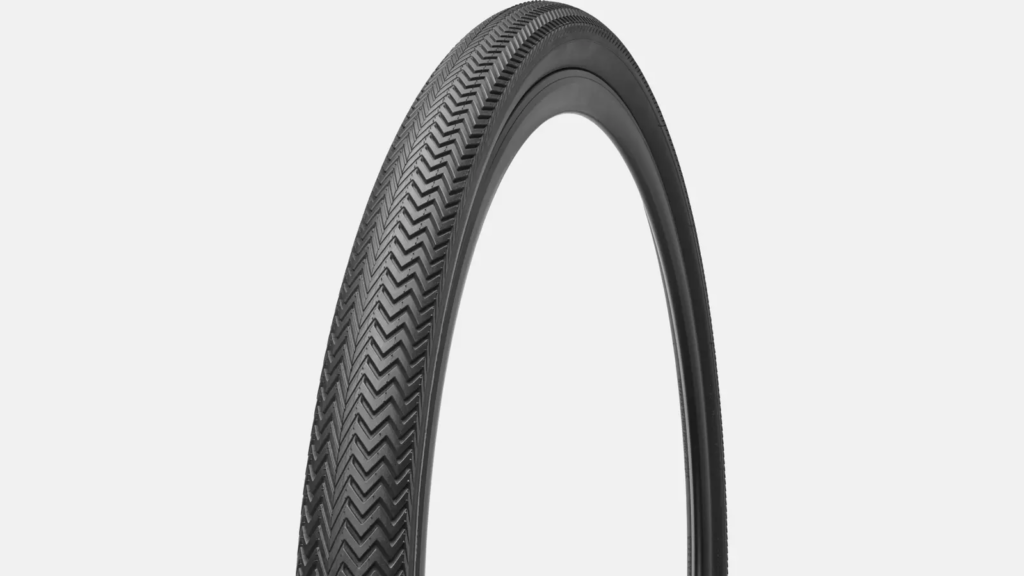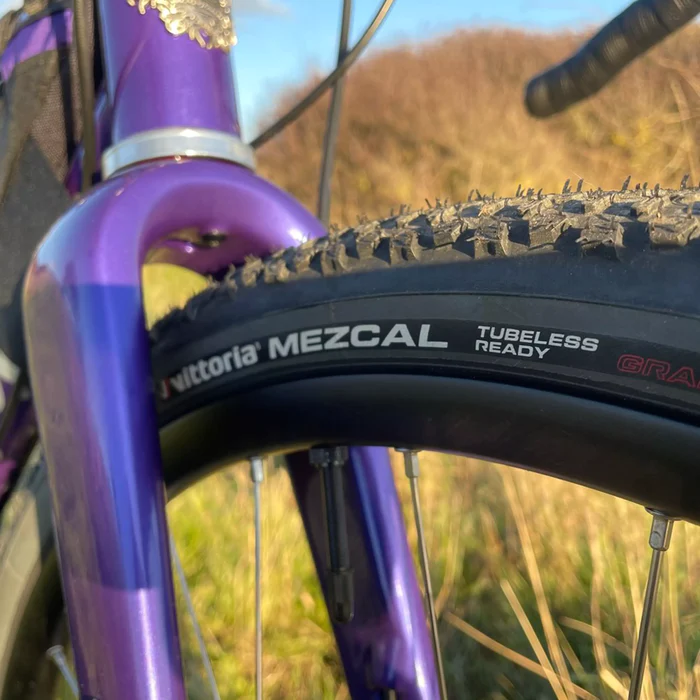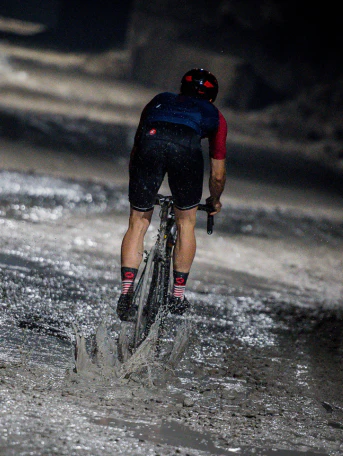Gravel Bike Tire Buyers Guide

Gravel Bike Tire Buyer’s Guide: Navigating the Terrain with Confidence
Gravel biking has rapidly gained popularity among cycling enthusiasts for its adventurous spirit and diverse terrain options. Whether you’re exploring scenic backroads, tackling rugged trails, or commuting on mixed surfaces, choosing the right gravel bike tire can significantly enhance your riding experience. In this gravel bike tire buyers guide, we’ll delve deep into the key factors to consider when selecting the perfect gravel bike tire to tackle a variety of terrains.
Understanding Gravel Bike Tires

Gravel bike tires are meticulously designed to provide a harmonious balance between speed, comfort, and durability. These specialized tires are typically wider than traditional road bike tires, offering increased traction and stability on unpaved surfaces. The versatility in tread patterns, casing materials, and widths available allows riders to customize their setup based on the type of terrain they’ll be encountering.
Tire Width and Clearance: Finding the Perfect Balance
Tire width is a pivotal factor that profoundly influences a gravel bike’s capabilities. Wider tires generally offer better traction and enhanced shock absorption on rough surfaces, contributing to a smoother ride. However, it’s important to consider that wider tires may lead to increased rolling resistance on smoother roads. Most gravel bikes can accommodate tires ranging from 32mm to 45mm in width, but it’s essential to take into account the clearance your bike frame and fork provide when selecting a tire width. Ensuring a proper fit prevents unnecessary issues and lets you ride confidently across various terrains.
Decoding Tread Patterns: Grip and Performance Unveiled
Tread patterns play a pivotal role in dictating a tire’s grip and overall performance on various surfaces. Gravel bike tires come in three main tread categories:
- Slick or Semi-Slick: These tires boast minimal to no tread, making them ideally suited for hard-packed gravel and smooth surfaces. They provide low rolling resistance, making your rides swifter.

- Small Knobs: Tires with small knobs strike an excellent balance between traction on loose gravel and dirt, without compromising too much on pavement performance.

- Aggressive Knobs: Geared toward conquering challenging terrains like muddy trails and loose gravel, tires with aggressive knobs ensure maximum traction and control. However, be mindful that they might introduce slightly higher rolling resistance on smoother surfaces.

Tubeless vs. Tubed: Pioneering the Tubeless Advantage
Among gravel bike riders, the trend leans heavily toward tubeless setups, and for good reasons. Tubeless tires usher in a new era of advantages. By eliminating the inner tube and running the tire directly on the rim, tubeless setups allow for lower tire pressures. This elevates comfort, grip, and maneuverability, while simultaneously reducing the risk of pinch flats. Moreover, tubeless tires offer enhanced puncture resistance due to the sealant inside, capable of sealing small punctures as they occur. However, it’s vital to note that a tubeless setup requires tubeless-compatible rims and specific sealant to prevent leaks.
Casing and Construction: Merging Durability with Performance

Gravel bike tires exhibit various casing options, each wielding an impact on their durability and ride quality. A higher thread count, often referred to as TPI (Threads Per Inch), generally indicates a more supple and comfortable tire. However, it’s important to acknowledge that tires with higher TPI may also be more susceptible to cuts and punctures. The choice between comfort and durability largely hinges on your individual riding preferences and the terrain you frequently traverse.
Puncture Protection: Safeguarding Against the Unexpected
When venturing into remote areas or tackling rough terrains, puncture protection becomes paramount. Many tire manufacturers incorporate innovative technologies such as Kevlar belts or extra layers of rubber to fortify tires against punctures. While these puncture-resistant features provide a safety net, it’s worth considering that they might add some weight to the tire.
Riding Conditions: Tailoring Tires to Terrain
The perfect gravel bike tire isn’t a one-size-fits-all scenario. Your tire selection should harmonize with the prevalent riding conditions you anticipate encountering:
- Smooth Gravel Roads: If your routes primarily consist of hard-packed gravel and relatively smooth surfaces, opt for tires with a smoother tread pattern and a narrower width. This configuration emphasizes a faster and smoother ride.
- Rough Trails: For those embracing rugged trails and challenging off-road terrains, wider tires with more aggressive tread patterns are indispensable. These tires provide the necessary traction and control to tackle uneven surfaces with confidence.
- Mixed Terrain Mastery: If your escapades encompass a medley of pavement, gravel, and dirt, a versatile tire with a balanced tread pattern and medium width serves as the ultimate compromise. This choice ensures you’re well-equipped to handle diverse surfaces without compromising performance.
Brand and Model Selection: Navigating the Options

A plethora of reputable tire manufacturers offer an array of gravel bike tires, each with its unique characteristics and strengths. Some popular options that have garnered widespread acclaim among gravel cyclists include the Schwalbe G-One, Panaracer GravelKing, WTB Nano, and Teravail Rutland. To streamline your decision-making process, peruse user reviews, and seek insights from cycling experts to pinpoint the tires that best align with your riding style and terrain preferences.
Embracing Experimentation and Personal Preference

While this guide serves as a comprehensive framework, it’s important to note that finding the perfect gravel bike tire often involves an element of experimentation. Different tires can wield a transformative impact on your bike’s handling and overall performance. Don’t shy away from testing various setups to unearth the precise combination that seamlessly melds with your riding style and the diverse terrain you intend to conquer.
Maintenance and Care: Extending Tire Longevity

Post-purchase, nurturing your gravel bike tires is an ongoing responsibility. Regularly inspect your tires for cuts, wear, and any embedded debris that could compromise their integrity. Adhering to the manufacturer’s recommended tire pressure range is imperative to ensure optimal performance and mitigate the risk of flats. Additionally, maintaining the proper amount of sealant in your tubeless setup is essential, as it rejuvenates the puncture-sealing capabilities, assuring you’re prepared for any surprises on the road.
Conclusion: Paving the Path for Unparalleled Adventures

Selecting the ideal gravel bike tire amalgamates technical prowess with individual preferences, culminating in a tailored riding experience. Armed with a profound understanding of tire width, tread patterns, construction, and an array of other pivotal factors, you’re poised to traverse a spectrum of surfaces with newfound confidence and control. Whether you’re a seasoned gravel aficionado or a newcomer lured by the allure of the unknown, your choice of tire can single-handedly redefine your cycling escapades. Through meticulous research and an affinity for exploration, you’re primed to unlock the full potential of gravel biking—a realm where uncharted trails and breathtaking landscapes await your tire’s imprint.
John
Useful Links
FAQ’s
Can you put gravel tires on a road bike?
Yes, you can put gravel tires on a road bike, but there are some considerations to keep in mind. Gravel tires are designed to provide better traction and stability on unpaved surfaces, making them suitable for riding on gravel roads, dirt paths, and other rough terrains. If you’re interested in using your road bike for gravel riding or light off-road adventures, switching to gravel tires can be beneficial.
Here are a few things to consider:
- Clearance: Make sure your road bike frame and fork have enough clearance to accommodate wider tires. Gravel tires are usually wider than typical road tires, so you’ll need to ensure there’s enough space between the tire and the frame/fork to avoid rubbing or clearance issues.
- Tire Size: Choose gravel tires that are appropriate for your bike’s rim width and frame clearance. Gravel tires come in various sizes, typically ranging from 28mm to 45mm or more. The tire size you can fit will depend on your bike’s specifications.
- Rim Compatibility: Check if your bike’s rims are compatible with wider tires. Some road bike rims might not be wide enough to provide proper support for wider gravel tires, affecting both performance and safety.
- Tire Tread: Gravel tires usually have a more aggressive tread pattern compared to slick road tires. This tread helps improve traction on loose surfaces. Consider the type of terrain you’ll be riding on and choose a tread pattern that suits your needs.
- Inflation Pressure: Gravel tires often require lower inflation pressures compared to road tires. This allows them to conform to uneven surfaces and provide better grip. Be sure to follow the manufacturer’s recommended pressure range for the specific tires you choose.
- Ride Quality: Switching to gravel tires might change the feel and handling of your road bike. Gravel tires can absorb vibrations better and offer a more comfortable ride on rough surfaces, but they might not be as fast on smooth roads as dedicated road tires.
- Braking Performance: Wider tires can impact braking performance, especially if your road bike has rim brakes. Make sure your brakes have enough clearance for the larger tires and consider adjusting your braking technique accordingly.
- Weight: Wider gravel tires are generally heavier than narrow road tires. This additional weight might not be a concern for most gravel riding, but it’s something to keep in mind if you switch back to riding on smoother roads.
Before making the switch to gravel tires, it’s a good idea to consult your bike’s manufacturer specifications, seek advice from your local bike shop, and consider your riding preferences. If you’re not comfortable making these changes yourself, a professional bike mechanic can help you with the tire installation and any necessary adjustments to ensure your bike performs well with the new gravel tires.
How to choose gravel bike tires?
Choosing the right gravel bike tires involves considering several factors to match your riding style, terrain, and preferences. Here’s a step-by-step guide to help you choose the best gravel tires for your needs:
- Understand Your Terrain: Consider the types of surfaces you’ll be riding on. Gravel comes in various forms, from well-packed dirt roads to loose gravel and rough trails. Think about the predominant terrain you’ll encounter.
- Tire Width: Gravel tires typically range from 28mm to 45mm or even wider. Wider tires provide more stability, better traction, and comfort on rough terrain. Choose a width based on your frame clearance and the level of off-road riding you plan to do.
- Tread Pattern: The tread pattern affects grip and performance on different surfaces. Consider the following options:
- Slick or Semi-Slick: Suitable for smoother gravel and packed dirt.
- Small Knobs: Offer a good balance between rolling resistance and off-road grip.
- Aggressive Knobs: Provide excellent traction on loose or muddy trails but might be slower on pavement.
- Tubeless vs. Tubed: Tubeless tires can be run at lower pressures for better traction without the risk of pinch flats. They also allow you to seal small punctures on the go. Tubeless setups can be a great choice for gravel riding.
- Puncture Protection: Gravel terrain can be harsh on tires. Look for tires with reinforced sidewalls and puncture protection layers to reduce the risk of flats.
- Riding Style and Speed: Consider your riding style. Are you looking for speed and efficiency, or are you prioritizing comfort and control? Your preference will influence tire choice.
- Brand and Model: Trusted brands often provide reliable tires. Look for reviews and recommendations from fellow gravel riders. Popular models include the Schwalbe G-One, WTB Nano, Panaracer GravelKing, and Teravail Rutland, among others.
- Rim Compatibility: Ensure the tires you’re considering are compatible with your bike’s rim width. Some tires may perform optimally on wider rims, while others might be better suited for narrower rims.
- Weight: Tire weight can impact rolling resistance and overall bike performance. Lighter tires may be faster on smoother surfaces, while heavier ones might provide better durability and puncture protection.
- Budget: Gravel tires come in a range of prices. While cost shouldn’t be the sole deciding factor, it’s worth considering how much you’re willing to invest in a quality set of tires.
- Try Before Committing: If possible, borrow or rent different tires to test how they perform on the terrain you plan to ride. This firsthand experience can help you make an informed decision.
- Front and Rear Consideration: Some riders opt for a different tire on the front (for better control and traction) and a different one on the rear (for better rolling efficiency). Experimenting with tire combinations can be useful.
Remember that there’s no one-size-fits-all answer when it comes to gravel tires. Your choice should align with your specific riding conditions, preferences, and bike setup. Consulting with local bike shops or experienced gravel riders can also provide valuable insights into tire options that suit your needs.
What is a typical gravel bike tire size?
A typical gravel bike tire size usually falls within the range of 35mm to 45mm in width. However, the specific tire size you choose depends on various factors, including the type of terrain you’ll be riding on, your preferences for comfort or speed, and your bike’s frame and fork clearance.
Here are some common gravel bike tire sizes:
- 700c x 35mm: This is a narrower option that offers a good compromise between on-road efficiency and off-road grip. It’s suitable for gravel riders who spend a fair amount of time on paved roads but still want the ability to tackle gravel and dirt paths.
- 700c x 40mm: This size has become quite popular for gravel riding. It strikes a balance between comfort and performance, making it versatile for a wide range of terrains.
- 700c x 45mm: A wider tire that provides increased stability and traction on rough surfaces. This size is great for riders who prioritize off-road performance and comfort.
- 650b x 47mm: Some gravel bikes use the smaller 650b wheel size with wider tires. This setup offers excellent traction and comfort while maintaining maneuverability.
Remember that tire size can affect your bike’s handling, clearance, and overall performance. It’s important to check your bike’s specifications to determine the maximum tire width it can accommodate. Additionally, your personal preferences and the specific conditions you’ll be riding in will influence the ideal tire size for your gravel bike.
When do you replace gravel bike tires?
Gravel bike tires, like all bike tires, have a finite lifespan and should be replaced when they show signs of wear, damage, or a significant decrease in performance. Here are some indicators to help you determine when to replace your gravel bike tires:
- Tread Wear: As the tread on your tires wears down, you’ll experience reduced traction, especially on loose surfaces like gravel. If you notice that the tread is significantly worn or has become shallow, it’s a good sign that the tire is reaching the end of its useful life.
- Visible Damage: Check your tires regularly for cuts, tears, punctures, or other visible damage. If you find any significant damage that compromises the integrity of the tire, it’s time to replace it.
- Bald Spots: If certain areas of the tread have become bald or smooth while others still have tread, it indicates uneven wear. This can affect the tire’s grip and stability, and it’s a sign that replacement is needed.
- Cracking or Dry Rot: Over time, tires can become brittle and develop cracks or dry rot. This is particularly true if the tires are exposed to sunlight and harsh weather conditions. Cracked or brittle tires are more prone to failure and should be replaced.
- Frequent Flats: If you’re experiencing a high number of flats even with proper tire maintenance and inflation, it could be a sign that the tire’s casing is compromised or that it’s becoming too worn to provide sufficient protection.
- Loss of Performance: As tires age and wear out, they may not perform as well in terms of grip, rolling resistance, and overall ride quality. If you notice a significant decrease in your bike’s performance, it could be due to worn-out tires.
- Sidewall Damage: Damage to the sidewall, including bulges, cuts, or signs of wear, can weaken the tire’s structure and lead to failure. If you see any issues with the sidewall, it’s best to replace the tire.
- Age: Even if a tire appears to be in good condition, it’s generally recommended to replace tires that are around 5-7 years old, as rubber compounds can degrade over time, affecting performance and safety.
- Loss of Pressure: If you find yourself needing to inflate your tires more frequently than usual, it could be a sign of slow leaks or porous casings, indicating that the tire needs replacement.
It’s important to regularly inspect your gravel bike tires for these signs of wear and damage. By replacing tires before they become severely compromised, you’ll ensure safer rides and better overall performance on various terrains.





